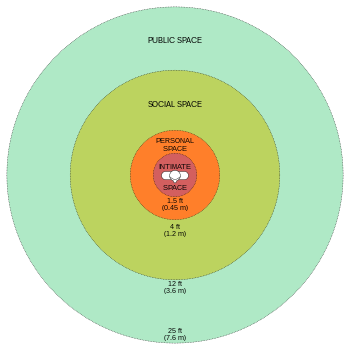Contact Culture vs. Noncontact Culture
 Culture can be described as contact
or noncontact cultures. Contact cultures in a sense have smaller personal
bubbles. People touch while speaking more, eye contact stronger, face-to-face body
orientation, and use closer proximity. These cultures can generally be found in
South America and Southern Europe. On the other hand, Northern Europe and the
United States are non contact cultures. Noncontact cultures have larger
personal bubbles. People like to keep more distance when talking, touch less
often and have weak eye contact. If we look past regional factors, there are
more important factors determining our contact culture: gender, age, ethnicity,
context, marital status, etc.
Culture can be described as contact
or noncontact cultures. Contact cultures in a sense have smaller personal
bubbles. People touch while speaking more, eye contact stronger, face-to-face body
orientation, and use closer proximity. These cultures can generally be found in
South America and Southern Europe. On the other hand, Northern Europe and the
United States are non contact cultures. Noncontact cultures have larger
personal bubbles. People like to keep more distance when talking, touch less
often and have weak eye contact. If we look past regional factors, there are
more important factors determining our contact culture: gender, age, ethnicity,
context, marital status, etc.
The United States in general
likes personal space. The video below is a great example of the etiquette
excepted by individuals in our culture. In elevators go to the space farthest
away from others and do not dive into conversations. We value our space and
privacy.
Below is a link that
talks about
China’s contact culture. Where people stand closer together and even
bump into
one another purposely.
 Context is one of the factors
that can contribute to whether a communication is contact or noncontact. There
is a major difference between contact with your significant other and contact
with a stranger in an elevator. I would say most people are closer to a ‘contact
culture’ with a loved one and ‘noncontact culture’ with a stranger. Although
this is just one of many other factors that create a culture’s contractual norms.
Context is one of the factors
that can contribute to whether a communication is contact or noncontact. There
is a major difference between contact with your significant other and contact
with a stranger in an elevator. I would say most people are closer to a ‘contact
culture’ with a loved one and ‘noncontact culture’ with a stranger. Although
this is just one of many other factors that create a culture’s contractual norms.
This idea of different personal
boundaries affects all my past and future international travels. I went to
Ecuador for a summer and at first I felt uncomfortable with the touching and
petting. Some people had never seen red hair so strangers would grab my hair
and pet it. After awhile I realized it was their natural contact culture and it
did not bother me as much. I think preparing to divulge into new cultures
requires research on etiquette and behavior when communicating. I would probably
hate China if everyone kept pushing me and I thought they were showing anger.
However, researching their contact culture would prepare me to know that they
were just making walking way for themselves in a crowded city.
Works
Cited
Florida,
U. o. (2009). Cultural Awareness. Retrieved February 2012, from China:
http://secondchina.com/Learning_Modules/AWARE/content/AWR_space_everyday.html
Martin, J., & Nakayama, T. (2010). Intercultural
Communication in Contexts. New York: McGraw Hill.
Personal Space Etiquette. (2008). Retrieved 2012, from YouTube:
http://www.youtube.com/watch?v=_s39BrB9oLQ
Your story about Ecuador is very interesting! I too am planning on traveling abroad this summer with a friend and now think I may need to research more then what to do but rather delve into social cultural traditions. I would imagine china and the busy streets of New York have similar contact cultures because of the large quantities of people.
ReplyDeleteI don't think I would have been able to feel comfortable with that much of a culture change. Having traveled to New York the constant contact and bubble violation was almost enough to send me off the deep end.
ReplyDeleteThe contact culture is a very eye opening topic. The link you posted was very informing and made me realize just how different our culture is here compared to the culture in China. It would be very different than what we are used to here in the United States, especially if people bump into one another on purpose. Great blogpost Amanda!
ReplyDeletehaving a background with contact culture, i would say it is hard for me to get along with people here, compared when i was back to my hometown. yeah, i'm agree that US is general like personal space. for a person who likes to make friends, i think personal space would be smaller :)
ReplyDelete